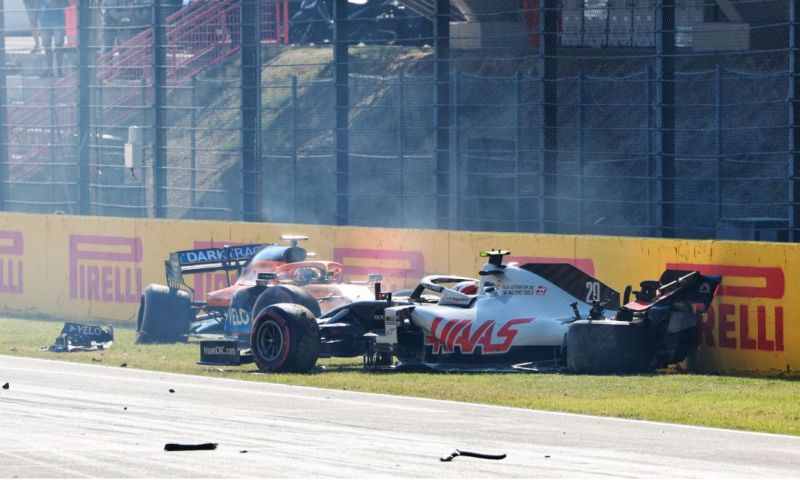F1 News

Palmer identifies three causes of the crash at the rolling restart at Mugello
- GPblog.com
At the rolling restart last Sunday it was Valtteri Bottas who set the pace and with the long straight at Mugello it was logical that the Finn took it easy for a long time. In midfield, however, things went badly wrong, with several drivers dropping out and even more drivers receiving a warning from the race management. Jolyon Palmer states in his analysis that there were three primary reasons for the crash.
Lighting
The circuit clearly shows everywhere with lights when a safety car is active and when they go out it's up to the leader to set the pace. "The issue in Mugello was that the Safety Car lights went out very late. Valtteri Bottas was told over team radio that the Safety Car was coming in as he was going through turns 10 and 11 in the middle sector, but he couldn’t actually drop back more than 10 car lengths from the Safety Car until the lights went out over 30 seconds later, as the cars were coming into the final corner."
"That all meant that Bottas effectively lost any chance to drop back and create any element of surprise for Hamilton by going on the way into the final corner or even through it," Palmer writes in his piece at Formula1.com. Bottas couldn't have fallen back sooner either, because he would have been taking too much distance under the safety car lights and that's not allowed. In short, Bottas was somewhat forced into the situation resulting in a very late restart.
The circuit
As a result of the previous point, the circuit itself will now also be discussed, as it has a contribution to it due to its layout. "With such a long straight, if he’d have gone sooner it was very likely that Hamilton would have passed him using the slipstream", Palmer continues. "All in all, through points 1 and 2 Bottas didn’t do anything wrong here and in fact took the most sensible restart approach. He kept a very constant speed on his run up to the start line which was as fair as he could be."
Still, the drivers in midfield end up causing a crash, due to the concurrence of circumstances. "Further back there were drivers who were either very opportunistic – or asleep at the restart leaving big gaps – or both, and this is ultimately what caused the crash, and got many of them a warning after the race from the stewards."
Here Palmer argues that primary cause is Kvyat with a bigger hole. "Every driver behind, who saw Kvyat go and thought the race was on, before slowing again. Each driver further back was accelerating earlier and for longer than the car ahead as they thought they were racing, and only realised they weren’t later. That meant each car further back was travelling faster into the pack of cars than the car ahead."
And that's the harmonica effect Palmer describes there, because the higher the speed, the longer the braking distance and then collisions occur.